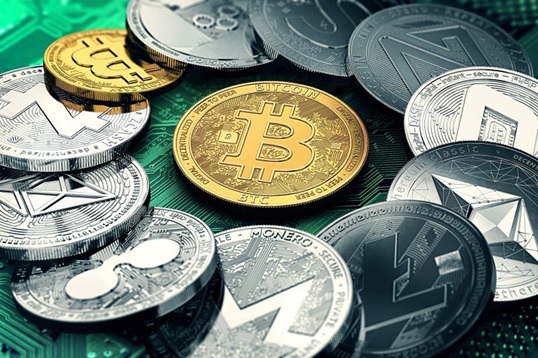The Invention of Crypto Currency
Cryptocurrency wasn’t actually invented in 2021 — it began much earlier — but 2021 was a landmark year for crypto due to mainstream adoption, institutional investment, and public awareness. Here's an explanation of cryptocurrency's invention and how it looked from the 2021 perspective:

Figure 1. How Cryptocurrency Was Invented: A Digital Revolution Begins.
The Birth of Cryptocurrency
In 2008, during the global financial crisis, a white paper titled "Bitcoin: A Peer-to-Peer Electronic Cash System" was published by Satoshi Nakamoto. Figure 1 shows How Cryptocurrency Was Invented: A Digital Revolution Begins
- It introduced the idea of a decentralized digital currency—not controlled by governments or banks.
- In 2009, Bitcoin officially launched as the first cryptocurrency, using blockchain technology to ensure transparency, immutability, and trust.
The Rise of Bitcoin
Initially, Bitcoin was adopted by small online communities and tech enthusiasts.
- In 2010, the first known real-world transaction occurred: 10,000 BTC were used to buy two pizzas (worth over $500 million in 2021!).
- Over time, Bitcoin's price slowly climbed, and altcoins (alternative cryptocurrencies) like Litecoin and Ripple started emerging.
- Blockchain became known for its potential to revolutionize finance, even beyond currency.
The Crypto Revolution Expands
Bitcoin hit nearly $20,000, sparking a global wave of interest.
- Ethereum introduced smart contracts, allowing decentralized apps (dApps) and finance systems to be built on blockchain.
- The crypto market experienced volatility, but innovation accelerated:
- Rise of ICOs (Initial Coin Offerings)
- Growth of blockchain projects in gaming, identity, logistics, etc.
- Governments began to notice and regulate crypto activities.
The Crypto Boom of 2021
- Mainstream adoption exploded:
- Tesla invested in Bitcoin.
- PayPal enabled crypto payments.
- NFTs (digital collectibles on blockchain) gained cultural traction.
- Ethereum 2.0 began rolling out to solve energy and speed issues.
- Crypto market hit $2+ trillion in total value.
- El Salvador became the first country to make Bitcoin legal tender.
- Cryptocurrencies became a serious asset class for investors and institutions.
Challenges and the Road Ahead (Looking Beyond 2021)
- Environmental concerns emerged about Bitcoin mining's energy usage.
- Scams and volatility remained issues for retail investors.
- Global governments debated:
- Central Bank Digital Currencies (CBDCs)
- Crypto regulation and taxation
- Still, the technology behind crypto—blockchain—was being adopted in sectors like healthcare, voting, and logistics.
- Cryptocurrency was no longer a niche idea; in 2021, it became a global financial movement.
Reference:
- https://www.wired.com/story/plaintext-punkonomics-cryptocurrency/?utm_source=chatgpt.com
Cite this article:
Nandhinidwaraka S (2021), The Invention of Crypto Currency, AnaTechMaz, pp. 44















